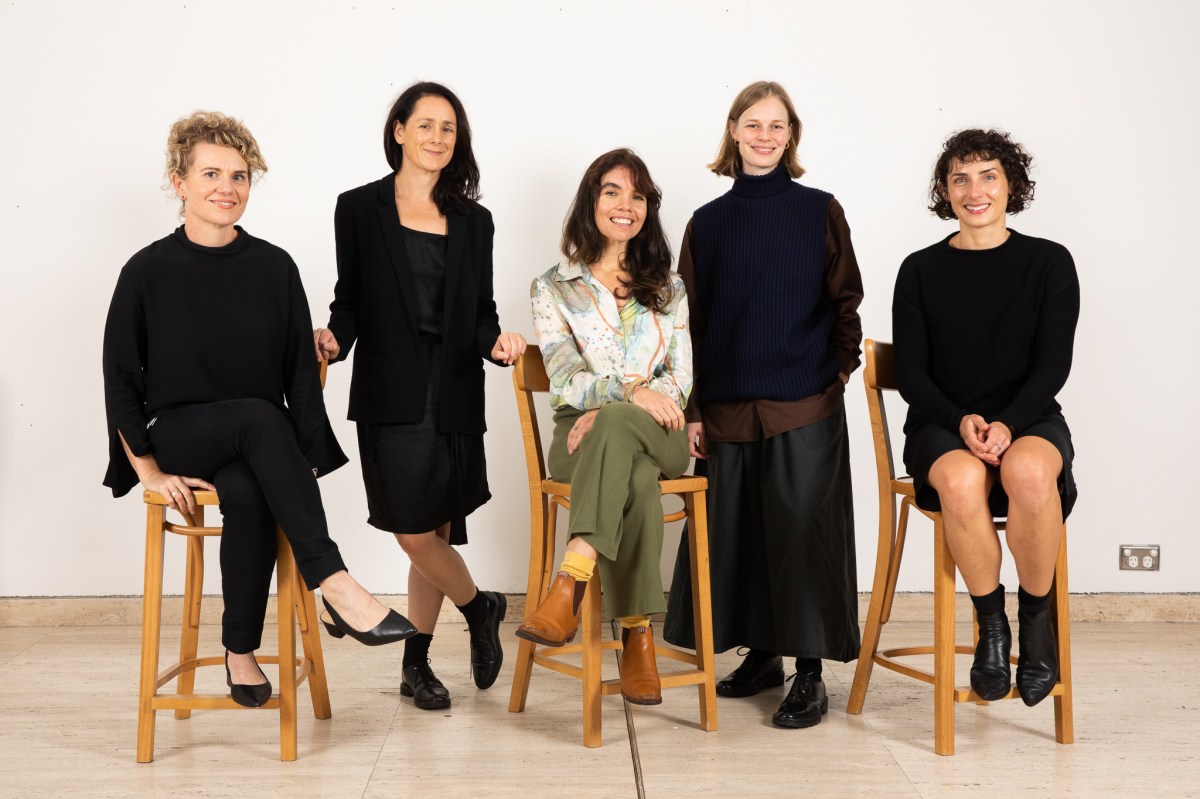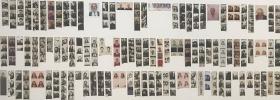Late last month the curators for The National 4 were announced – to be presented next year across the Art Gallery of New South Wales (AGNSW), the Museum of Contemporary Art Australia (MCA), Carriageworks, and Campbelltown Art Centre (C-A-C) – all powerhouse institutions shaping the footprint of contemporary Australian art.
Those curators are all women.
It prompted us to ask them for their read on the current state of gender balance and opportunities within curatorial circles, and how the 2023 edition of this important survey might reflect that professional shift …or not?
‘When I compare the situation today to when I entered the industry in the late 1990s, there are now a far greater number of qualified curators out there competing for opportunities,’ said Jane Devery Senior Curator, Exhibitions MCA.
‘[But] I couldn’t say if my gender has played a positive or negative role in my case,’ she continued. Devery said that ‘curatorial positions are highly competitive; that is certain. Compared to other professions, there are very few professional opportunities.’
So it prompted us to ask…
Is it difficult to get “the big gigs” as a female curator?
Devery joins Beatrice Gralton, Senior Curator, Brett Whiteley Studio, AGNSW; independent curator Freja Carmichael and Aarna Fitzgerald Hanley, Curator, Programs at Carriageworks; alongside Emily Rolfe, Curator at Campbelltown Arts Centre to make up a curatorium that will shape the major survey, opening March 2023.
The first three editions of The National attracted close to 1 million visitors and presented the work of 158 contemporary artists, collectives and collaboratives – pitted as a showcase of new work being made across the country by artists of different generations and cultural backgrounds.
Of the opportunity and gender, Gralton told ArtsHub: ‘I don’t think I’ve come across blatant sexism as such. If anything, in Australia there is simply a surplus of really qualified people and a lack of roles to sustain them.’
When you are told no, ask why not?
Beatrice Gralton, Senior Curator, Brett Whiteley Studio
Carmichael and Fitzgerald Hanley said that it was important to, ‘determine what you want to contribute, but understand that it is ok if you take some side turns along the way.’
Gralton added: ‘Taking time out to have kids can certainly make the road less direct, but that isn’t something I would change.’
In a first, the biennial survey of Australian contemporary art will expand to Greater Sydney, with curator Emily Rolfe joining the team for Campbelltown Arts Centre (C-A-C). She said: ‘Being part of the curatorium for a project of this scale and profile is an honour and a highlight in my career to date. Developing relationships with artists and creative practitioners who work across Australia, as well as commissioning new work, brings invaluable experience.’
Are women better suited to collaborative projects?
Gralton has worked with a very diverse range of curators, artists and producers across her career, and she believes that, ‘it really depends on the establishment of honest and respectful relationships, and the capacity to have conversations with colleagues where it may be more important for one to listen than speak.
‘I’m not so sure women are any more collaborative than anyone else!’ she added.
Also seasoned at working with women, men and non-binary curators, her point was echoed by Devery: ‘I think successful collaboration comes down to having shared values and sensibilities, mutual respect, an openness to each other’s ideas and willingness to learn from each other.’
Rolfe believes that venue partnership in developing The National 2023 is ‘a strong example of the power and importance of collaborative work.
‘It’s always a joy to collaborate and develop relationships with female colleagues, however this is not something we as a curatorium have focussed on or discussed,’ Rolfe told ArtsHub.
Read: Curatoriums are the new programming superpower
‘Our jobs are constantly collaborative – our sector relies upon strong collaboration skills,’ she said of the profession more generally.
As co-curators Carmichael and Fitzgerald Hanley said, ‘the process of developing the show collaboratively has been about acknowledging our own way of working and finding a shared language. It has been about listening to one another to identify points of connection, but also allowing space for our distinct voices.
‘As curators who are working in different spaces, we’re grateful for the opportunity to come together and share ideas,’ they added, acknowledging that while the curatorial profession is extremely collegiate, it is also very project driven which can be siloed or focused at any moment.
Devery said that while being female is something this group of curators have in common, ‘I don’t think it’s the most important thing about us collectively.
‘Our backgrounds, interests, areas of expertise, curatorial experience, ages and personal backgrounds are all very different, but also complementary, and I think that these are the qualities that will give this iteration of the exhibition an interesting inflection.’
Can an exhibition’s “tone” shift with a different gender lens?
Gralton explained the logistics of shaping The National 4’s vision: ‘We are making four exhibitions in conversation with each other, yet they all need to work to the strengths of our organisations too,’ adding that they each, ‘come to the project with different experiences and interests which I hope fuels the tone of the project.’
‘I believe that biennial surveys of contemporary art do have a vital role to play in the arts ecology of the country,’ Devery told ArtsHub. ‘They provide an important platform and voice to diverse artists each of whom have important things to say about the times in which we live.’
She continued: ‘I think that this is especially true for this iteration of the exhibition at this time of enormous social, political and environmental upheaval, when artists are imagining and manifesting new ways of seeing and being in the world.’
Rolfe added: ‘From the outset there have been a lot of overlaps in our thoughts about the themes we are interested in exploring through this project.’
‘These shared interests will shape the venues and possibly connect them in a greater way than in earlier iterations. A few of these ideas may root in shared experiences, but I think we would all agree this isn’t about our gender,’ Rolfe said.
It would seem that time and moment, rather than gender and position seem to be the greater priority for this survey.
Read: Do women make better curators?
‘The fact that each iteration is presented across institutions allows for multiple voices to be in conversation. By allowing for these different curatorial perspectives, it provides a broad understanding or enquiry into what is happening today,’ added Carmichael and Fitzgerald Hanley.
Gralton reminded, however, that it is the artist’s voice that comes first in such projects.
‘I think we all agree that it is artists who shape the cultural narrative and that as curators, it is our role is to facilitate the work and to help expand the conversation for new audiences,’ Gralton said.
And advice to emerging female curators?
‘See as much art as you can. See everything!’ says Gralton. ‘Spit yourself out of comfortable places and take risks. Work hard because it is rewarding.’
This idea was echoed by Devery: ‘My advice would be to any young curator starting out, regardless of gender, is to work hard, see as much as you can, read as much as you can, don’t be afraid to form your own opinions and areas of interest, get out there and form your own relationships with artists, writers, thinkers, other curators.
She added: ‘Find mentors, formal or informal, whose work resonates with your own ideas and interests.’
Devery continued on the theme of collegiality and mentoring among female curators: ‘I have been fortunate to have had the support of some very talented female curators over the years which has been enormously encouraging, but equally [there are] many male curators who have been important mentors to me who have paved the way for professional opportunities.’
However Gralton’s key piece of advice was: ‘When you are told no, ask why not?’
‘All experiences – direct or indirect – are important and come together to inform what you are working towards. Find your support networks. Take the time to care for those you are working with. Curatorial work is fundamentally about people and relationships,’ Carmichael and Fitzgerald Hanley concluded.
The exhibition dates for The National 4: Australian Art Now are:
Art Gallery of New South Wales: 18 March – 25 June 2023
Campbelltown Arts Centre: 30 March – 25 June 2023
Carriageworks: 30 March – 25 June 2023
Museum of Contemporary Art Australia: 31 March – 25 June 2023





